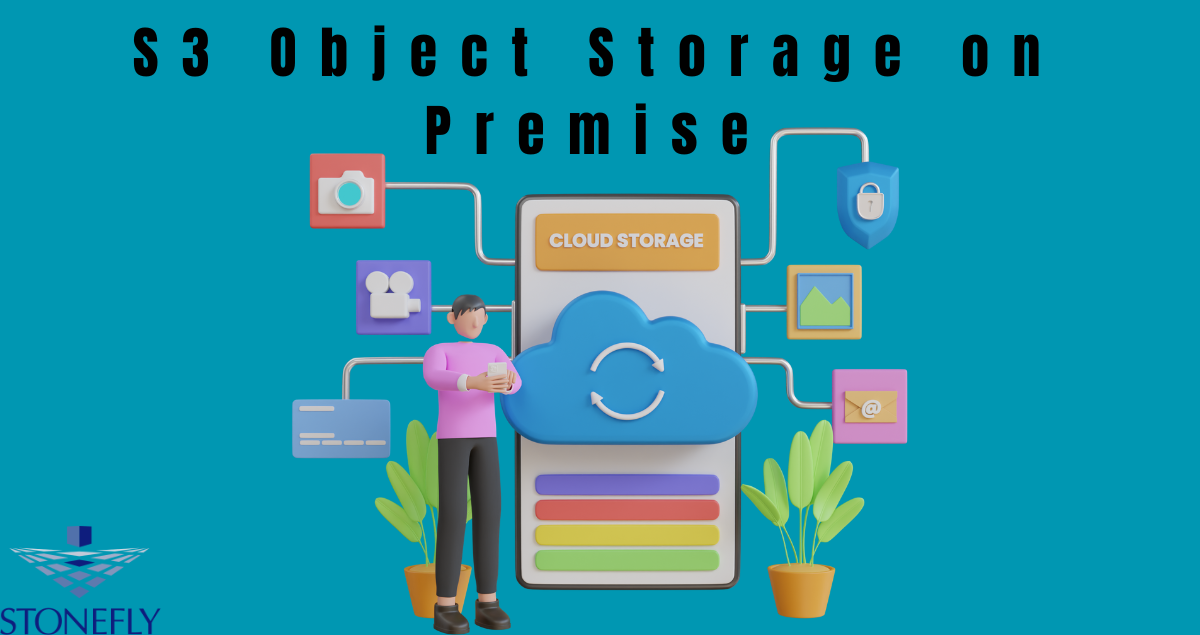Waiting for files to load can be frustrating. Whether you’re running a business, managing a website, or working on a project, slow data access is a problem. It wastes time, slows down apps, and can even cause users to leave your site. If you’re using object storage and your data loads slowly, it’s time to fix that.
In this article, we’ll explain why data might load slowly and how to solve it using S3 Intelligent-Tiering and caching tools like CDNs. We’ll also show you how to run everything with S3 object storage on-premise, so you keep full control over your files and your setup.
Use S3 Object Storage On-Premise
The best way to fix all these issues? Bring storage in-house.
S3 Object Storage On-Premise means your files are stored in your own building, office, or data center—not in someone else’s cloud. You get full control over your hardware, settings, and speed. This setup works with S3 Intelligent-Tiering and caching systems like CDNs.
With on-premise S3 object storage, your files stay close to where they’re needed. You decide how they’re stored and accessed. That’s the foundation of better speed and performance.
Why Does Data Load Slowly?
To fix the problem, you first need to understand what causes it. Here are the most common reasons data might load slowly:
1. Data Is Stored Far Away
If your storage is located far from your users or systems, it takes longer for data to reach them. Just like a package takes longer to ship across the country, data takes longer to travel a long distance.
2. Wrong Type of Storage
Some object storage is made for long-term storage. That’s great if you don’t need the data often, but bad if you want to access it quickly. Files stored in cold storage can take minutes—or even hours—to retrieve.
3. No Caching in Place
If every user request has to go all the way back to the main storage, that adds delay. Without a cache, nothing is saved for quick use later. It’s like re-cooking the same meal from scratch every time someone orders it.
What Is S3 Intelligent-Tiering?
S3 Intelligent-Tiering is a smart way to manage your file storage.
Here’s what it does:
- It checks how often each file is used.
- Files used a lot stay in fast storage.
- Files used less often are moved to slower, cheaper storage.
- If an old file gets used again, it’s moved back to fast storage.
All of this happens in the background. You don’t have to move files yourself or guess what needs to stay in fast storage.
How Intelligent-Tiering Improves Speed and Saves Money
Faster File Access
Frequently used files stay in the fast lane. That means quicker load times for users and apps.
Lower Costs
You don’t have to pay to keep every file in fast storage. The system moves less-used files to slower (and cheaper) storage automatically.
No Manual Work
You don’t have to sort through hundreds or thousands of files. The system makes the decisions based on usage.
What Is a CDN?
A CDN, or Content Delivery Network, is a tool that caches (saves) copies of your files in servers close to your users.
Let’s say your main storage is in Texas. If a user in New York tries to load a file, a CDN can give them a copy Stored in New York instead of going all the way to Texas. That makes things much faster.
Key Benefits of a CDN
- Speeds up file access
- Reduces load on your main storage
- Handles traffic spikes better
- Improves user experience, especially for global users
Why You Need Both Intelligent-Tiering and a CDN
Each tool solves a different part of the problem:
- Intelligent-Tiering manages storage smartly.
- CDN handles fast delivery to users.
Together, they give you the best of both worlds: smart storage and fast performance.
How to Set Everything Up
Step 1: Use On-Premise S3 Object Storage
Choose an S3-compatible storage system you can install and run in your own space. This gives you full control, low latency, and full compatibility with S3 tools.
Step 2: Enable Intelligent-Tiering
Turn on the Intelligent-Tiering feature in your storage system. Most systems will handle this automatically once it’s enabled.
You can also set rules, like:
- Move to cold storage after 30 days of no access
- Move back to fast storage if accessed again
Step 3: Set Up a CDN
Pick a CDN service that works with S3-compatible storage. Point it to your storage system. Once it’s connected, it will start saving copies of files as they’re requested.
You can also set how long the CDN keeps files and how often it checks for updates.
Step 4: Monitor Performance
Keep an eye on access logs and storage reports. You’ll see which files are used most, which are being cached, and how often files are moved between storage tiers.
This data helps you fine-tune your setup even more.
Example: How It All Works Together
Let’s say you run a website with video tutorials:
- You store the videos in on-premise S3 object storage.
- Intelligent-Tiering keeps popular videos in fast storage.
- Rarely watched videos go to cold storage.
- Your CDN caches the popular videos in servers near your users.
So when someone hits “play,” the video loads fast—either from the fast storage or the nearby CDN cache. And you save money by not keeping every video in fast storage.
What Happens If You Skip These Steps?
If you don’t use Intelligent-Tiering:
- All files stay in fast storage—this costs more.
- Or you move files manually, which takes time and effort.
If you don’t use a CDN:
- Every user must pull data from your main storage.
- This slows things down, especially for users far away.
If you don’t use on-premise storage:
- You rely on someone else’s servers.
- You have less control over speed and security.
Best Use Cases for This Setup
This combo works well for:
- Large media files (videos, images, audio)
- Software downloads or updates
- Reports or backups
- Online learning platforms
- Internal systems with lots of users
Basically, if you’ve got data that people need to access quickly and often, this setup makes sense.
Common Mistakes to Avoid
Mistake #1: Leaving All Files in One Storage Tier
This wastes money. Let Intelligent-Tiering move files for you.
Mistake #2: Not Using a CDN
Even if your storage is fast, users far away will still see slow load times. A CDN fixes this.
Mistake #3: Setting Poor Tiering Rules
Make sure your system isn’t moving files to slow storage too soon. Base your rules on real usage patterns.
Mistake #4: Forgetting to Monitor Logs
Logs show what’s working and what’s not. Always review them to improve your setup.
Final Thoughts
Slow data access doesn’t have to be part of your system. You can fix it with three simple steps:
- Use S3-compatible object storage on-premise.
- Turn on Intelligent-Tiering to keep important files in fast storage.
- Add a CDN to cache files close to users.
This setup gives you speed, control, and cost savings. And once it’s in place, it mostly runs by itself.
You get better results without extra effort—and your users stay happy.
FAQs
1. Can I still use Intelligent-Tiering if my storage is on-premise?
Yes. Many on-premise S3-compatible systems support Intelligent-Tiering. You don’t need cloud storage to use it.
2. Do I need a CDN if all my users are local?
Maybe not, but it can still help. Even within one region, caching can speed up delivery and reduce pressure on your main storage.
3. Is Intelligent-Tiering safe for important files?
Yes. It doesn’t delete anything. It just moves files between storage speeds. Your data is still safe and available.
4. How often does tiering move files?
It depends on your settings. Some systems check daily, others check weekly. You can customize this based on your needs.
5. Can I use this setup for apps, not just websites?
Absolutely. Any app that loads files—images, data, video, reports—can benefit from this setup.



